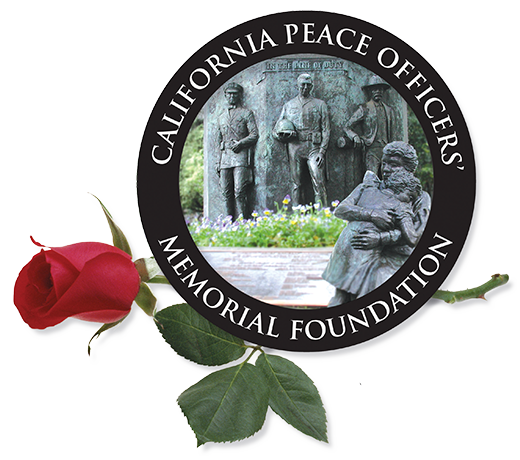A San Jose motorcycle police officer was killed September 8 when he and his bike slid into a car although skid and gouge marks showed he stomped on the brakes in a desperate effort to avoid the collision.
Robert L. Wirht, 44, an instructor for the motorcycle safety foundation who spent nearly half his police career enforcing traffic laws on his cycle, was flipped through the air at least twice after hitting the left front door of a blue Mustang where the door and the front fender meet, according to Sgt. Charles Blackmore.
Police said the Mustang was driven by Gina Ann Martinez of San Jose, an Evergreen Valley College student who just had celebrated her 20th birthday.
Wirht, a 15-year veteran of the department, was working on radar enforcement trying to stop a white vehicle that was speeding when the Mustang veered into the lane in front of him, police said.
The white car did not stop when the police cycle and the Mustang collided. Wirht was pronounced dead on arrival at San Jose Medical Center; it appeared he died of head trauma.
Blackmore said Wirht might have struck his head on the strobe lights on the rear of his motorcycle as he was tossed from the 800-pound bike.
The accident remains under investigation. But from initial reports, Blackmore said Wirht was in the northbound fast lane of the road accelerating as he tried to catch the white car he had determined was speeding from his hand held radar gun.
Moments before, Officer Tom Harris, another motorcycle officer on radar duty with Wirht, had pulled over a car driven by Esther Togiai, 20, an Evergreen nursing student.
After the accident, Togiai slipped out of her seat belt and ran to the side of Wirht and attempted to give the officer CPR.
“But she told us she was unable to detect a pulse,” Blackmore said. When Togiai first was stopped at the right side of the road, a car coming up in the slow lane cut its speed, Blackmore said Melinda Wilson, 32, of San Jose told police she slowed because she was concerned about safely passing the stopped car.
As she slowed, Wilson noticed in her rearview mirror that a blue Mustang was coming up behind her and she braced herself to be hit, Blackmore said.
Instead, Wilson told officers, the Mustang skidded left into the fast lane and she heard tires squeal and a crash.
According to Blackmore, Martinez told officers at the scene that she began to slow down when the car in front of her did.
“But she misjudged the speed of the car ahead and had to brake harder,” Blackmore said. “She thought she was going to hit the other car and swerved to the left. She lost control and skidded toward the dirt medium strip. It happened so fast she said she heard the crash and saw the motorcycle at the same time.”
Martinez was taken to police headquarters after the accident and police drew a blood sample from her although Blackmore made it clear there was no indication the young woman had been drinking. She had just left her night classes at nearby Evergreen as had Togiai, he said. Martinez later was driven home by officers.
Capt. William Lansdowne said this is the only on-duty death of a motorcycle officer in the department he can recall, although there have been a number of motorcycle officers injured. Police officers generally consider riding a motorcycle to be one of the most dangerous assignments.
A year ago, police said, Wirht was involved in another on-duty accident when a car went through a stop sign and hit his motorcycle broadside. The officer suffered facial injuries in that crash.
A Vietnam veteran, Wirht was active in the Marine Reserves in which he held the rank of chief warrant officer. He joined the police department in 1973. He has been a field training officer, and worked in personnel and patrol before being assigned to traffic enforcement in 1981.
A teacher in the police programs in both the Gavilan and San Jose Community College districts, Wirht also worked with recruits at the police academy, where he was a tactical officer.
Last December he underwent a successful heart bypass operation.
Wirht is survived by his wife and three children – girls aged 2 ½ and 4, and a boy, 17.
Prior to joining San Jose Police Department, Bob spent a few years as a deputy at the San Clara County Sheriff’s Office and a short hitch as a Fremont P.D. officer. He was appointed as a San Jose police officer on Jan. 22, 1973.
